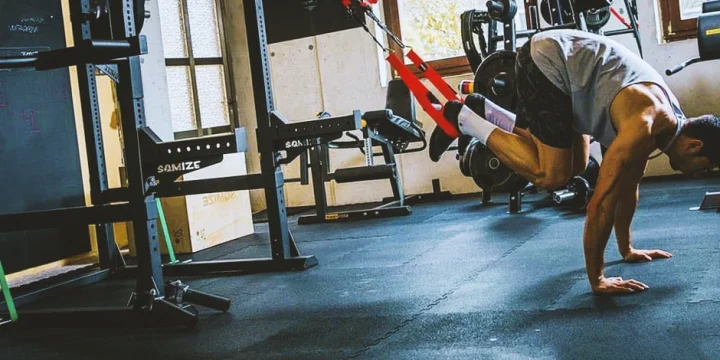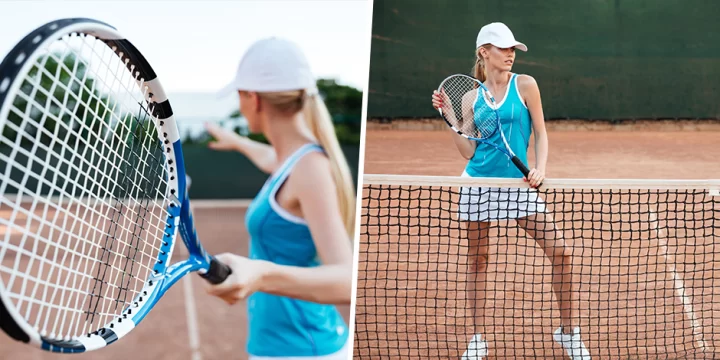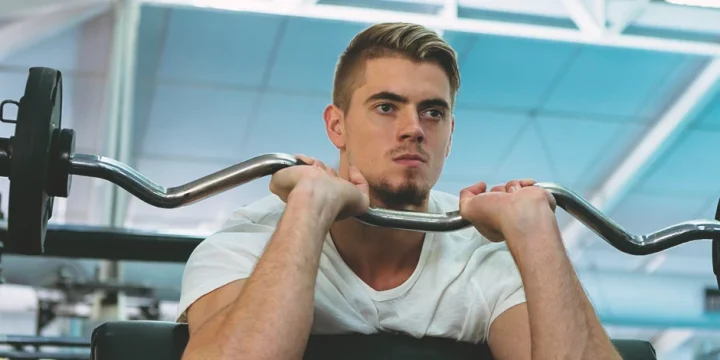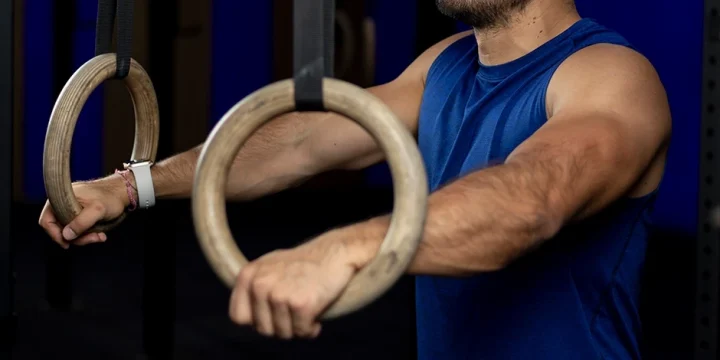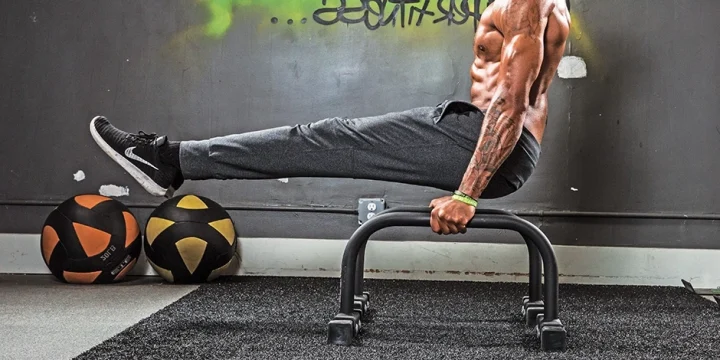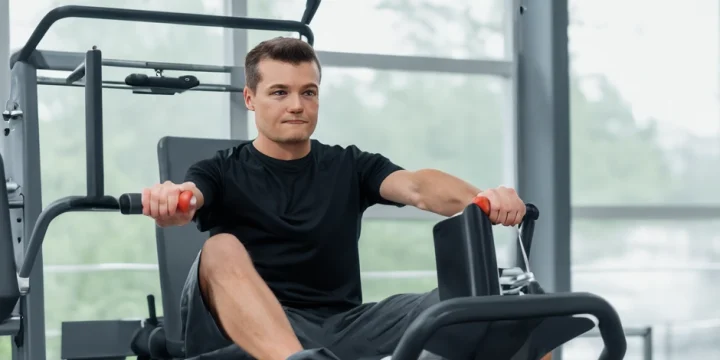Considered
 144
144
of Research
 99
99
Examined
 14
14
Interviewed
As a personal trainer with over a decade of experience, I can share that while calisthenics primarily relies on body weight, incorporating specific equipment can amplify your workout and yield more remarkable results.
To evaluate the best types of products you need, my team of colleagues and I dedicated significant time to researching and selecting nine essential items. These tools are beneficial whether you're embarking on your calisthenics journey or striving to perfect advanced and fully benefit from this type of workout.
What Equipment Do I Need to Start Calisthenics?
The equipment you need to start calisthenics is a dip bar, power tower, pull-up bar, gymnastic rings, resistance band, jump rope, weight vest, workout gloves, and ab wheel.
Let's discuss the role of each accessory below.
Calisthenics Dip Bars
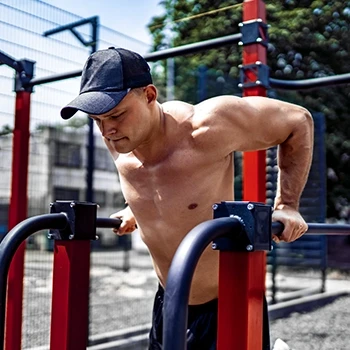
When I first added dip bars to my workout, their versatility was a game-changer.
I've used both separate and fixed stands; fixed ones are stable, but I prefer the portable ones despite some wobbles. According to the National Institute of Health (NIH), dip bars boost upper body strength with exercises like static holds and bar dips [1].
They're a bit pricey and large but great for core exercises like dips, L-sits, and handstands. If you're handy, you can DIY them or opt for parallettes as a compact alternative.
Calisthenics Power Tower
Starting with the power tower as a beginner, it's amazing to see how far I've come. Each pull-up and dip is a reminder of early challenges and the thrill of my first solo pull-up.
It's more than just gear; it symbolizes my athletic journey. The power tower, a versatile all-in-one, supports a range of exercises.
Despite its larger size, I highly recommend it for its excellent value, safety, stability, and comfort.
Calisthenics Pull-Up Bars
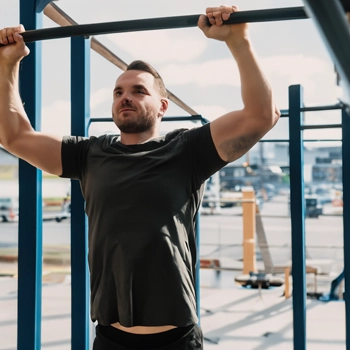
Whichever type of pull up bar you pick, make sure it’s stable, adaptable, and allows you a comfortable non-slip grip.
Gymnastic Rings
The first time on gymnastic rings, I felt both the wobble of uncertainty and the thrill of progress.
Each workout is a blend of strength and gravity, showcasing my improved balance and muscle strength. Gym rings are great for intermediate or advanced athletes (not beginners) due to the strength and balance needed.
They're budget-friendly, lightweight, and simple to install – even on a tree. Just ensure they're high-quality for safety and have adjustable straps for joint comfort.
Resistance Bands
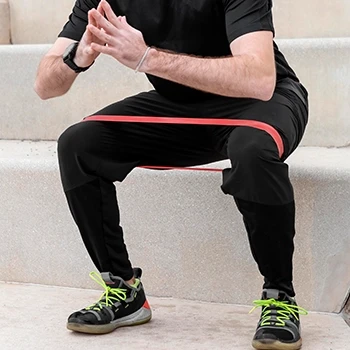
I didn't value resistance bands until I experienced their impact. Each band, light to heavy, represents a step in my strength journey. They're key in warm-ups, workouts, and cool-downs, blending size and simplicity with effectiveness.
Bands either add resistance to make your movements harder and help you progress through particular calisthenics exercises, or they take resistance away to make exercises easier if you lack strength.
I’d recommend getting a set of bands with different resistance levels for different exercises.
Related Article: Resistance bands vs dumbbells
Jump Rope
According to NIH, a jump rope is another piece of equipment fantastic for warm-up, stretching, coordination, burning calories, and intensive cardio training [3].
Whether you choose a light rope or one with weights in the handles, you may achieve fantastic results. Just ensure the rope length is adjustable and it has non-slip handles that provide your sweaty palms a secure grip.
Weight Vest
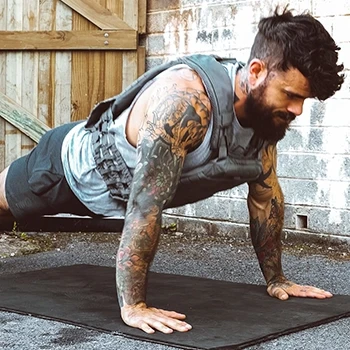
Weighted vests help seasoned athletes ramp up their training with added weight and resistance in advanced exercises.
Beginners should hold off on buying one until they're strong and skilled enough to avoid injury.
Though costly, a weight vest is a solid investment for boosting training intensity, muscle mass, and strength more quickly.
You can also mix it up with suspension straps, like the guy in the photo.
Related:
Ab Wheel
If you’d like to engage all your abs, lower back muscles, arms, shoulders, and chest, adding an ab wheel to your arsenal would be sensible.
You can use it to add resistance when doing various bodyweight exercises and progressions on your knees, toes, on a sloped surface, with one hand, etc., as long as it’s non-slip with comfortable handles.
Also, it’s easy to disassemble, so you can take it with you wherever you want. You can check out the best ab wheels here.
Workout Gloves
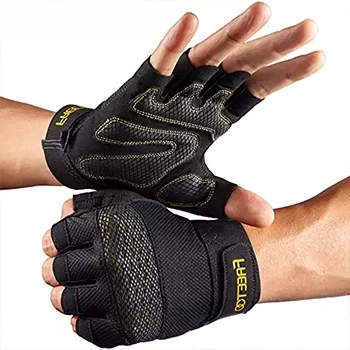
Wrist and hand issues like blisters and calluses are usually unavoidable when you exercise hard.
The right pair of workout gloves can help protect your hands, improve your grip, and evenly distribute the weight you’re lifting.
With or without fingers, gloves are helpful as long as they’re flexible, made from excellent materials, and provide good wrist support and hand protection.
How We Tested the Calisthenics Gear
When testing the calisthenics gear, we followed a structured approach to ensure a comprehensive evaluation of their performance and suitability.
Rigorous selection process
We began with thorough research to pinpoint top-rated calisthenics gear, focusing on quality, user reviews, brand reputation, and features.
We examined the materials and construction of each piece of gear for robustness and durability. Team members used the gear in their own training routines, putting them through rigorous exercises like pull-ups, dips, and muscle-ups to test their resilience and longevity.
Expert reviewers
Our team, comprising fitness buffs and professional athletes with extensive calisthenics experience, led the testing. Their expertise provided a thorough and unbiased analysis of each product's functionality, durability, and safety.
Team members with different body types and training levels used the gear to provide a range of perspectives on comfort and user-friendliness.
Real-world testing scenarios
We're big on authentic testing. Each gear piece endured rigorous exercises reflecting a typical calisthenics routine, in various settings like gyms and parks, for a comprehensive evaluation.
User Feedback
We compiled overall satisfaction ratings from various sources, including e-commerce platforms, fitness blogs, and direct customer reviews. This helped us gauge the general sentiment towards each piece of gear, highlighting any recurring praises or concerns.
Buyer's Guide for Calisthenics Equipment

When buying calisthenics equipment, consider factors like your fitness level, the available space, the equipment size, and the price.
Your Training Goals and Level
Newbies and pro athletes don’t need the same gear because their fitness levels and training goals greatly differ.
When it comes to building a home gym, the most important thing you need to do is be honest with yourself. Do a 'needs analysis' for yourself. Be realistic about your goals and what's necessary. This will help get you started on what steps need to be taken first.
- Thomas Boatswain, Personal Trainer
So, what are YOU trying to achieve? The calisthenics equipment and items you choose should align with your goals and enable you to make progress in your focus areas.
To help make sure you're actually meeting your goals, it's important that you track them properly and accurately. You can check out our review of the best weightlifting trackers.
Available Space and Equipment Size
It would be wise to think about the equipment size and whether you have enough space to move around it, exercise, and store it when you’re not using it.
Don’t forget to measure everything precisely and plan the layout before you head towards the stores. That’s how you can prevent your limited space from limiting your workout.
Someone who can dedicate only a small part of a room to a workout corner won’t be able to do the same type of training and buy the same gear as someone who can use a spare room, garage, or backyard as a calisthenics gym.
Price

Another key factor that’s likely to determine the pieces you’ll buy is their price.
If you’re on a tight budget, you’d probably consider cheaper or secondhand options. But make sure they meet your specific goals, skills, and needs. Otherwise, it’s a waste of money.
You don’t have to buy it all at once. Think carefully and start slowly. Plan how to get more bang for your bucks without compromising quality.
How Difficult It Is to Put Together and Install
I believe the pieces that may be best for your home workout are the portable ones that are quick and easy to put together and install.
Especially when you’re short of space and time, getting something simple to assemble and disassemble is critical. Also, make sure all the gear’s sturdy and safe.
Can You Do Calisthenics Without Equipment?
Yes, you can do calisthenics without equipment. That’s the beauty and simplicity of it. You can do it anywhere, anytime.
Calisthenics exercises are basically all about lifting your own body weight and progressive resistance.
BUT:
If you seriously decide to move from the foundational to the advanced level of calisthenics, it would be helpful to get at least essential gear to maximize your home setup.
It’s usually inexpensive and doesn’t take up too much space, whereas it can help you get the most out of your workouts.
What Are The Benefits of Your Own Home Gym?

Creating a home workout space is smart, especially if you're into calisthenics. Why pay for a gym when you don’t need their fancy equipment? A treadmill's no good for diamond push-ups.
Home workouts can be more motivating for some, and they have loads of perks.
- Perfect for crushing goals: A home gym tailored to your needs can skyrocket your performance. You'll have everything you need to nail those goals.
- Big time-saver: If your lifestyle is hectic, a home gym is a perfect choice because you don’t have to worry about commuting. You can work out when it suits you best without waiting for a machine to free up or glancing at a watch, worrying about how to pick up your kids from school, or making it to work on time.
- Cheaper in the long run: In the U.S., gym memberships average $58 monthly, but real costs can shoot up to $135 with all the extras. Setting up a home gym might seem pricey initially, but it can save you big bucks over time.
- Total freedom and privacy: Your gym is your private nook with your own rules. No more dull tunes or distractions by other people’s workouts or crowds unless you invite some friends to join you.
- Safer and better maintained: You'll keep your home gym cleaner and safer than any public gym. Say goodbye to sweaty equipment and shared showers. Your gear will last longer and be healthier for you.
Related posts:
Psychological Benefits of Using Calisthenics Gear
Calisthenics gear like pull-up bars and gymnastic rings not only diversifies workouts but also boosts mental health.
As users improve and get stronger, they feel more motivated and confident, enhancing their sense of achievement.
Mastering new skills and conquering challenges boosts mental well-being, self-image, and self-esteem.
Customization and Personalization Options
Customizing calisthenics gear, like tailored grips in different textures and sizes, adds comfort and boosts performance. Manufacturers often provide color choices to suit personal styles.
Engravings of names or quotes add a personal touch. These customizations improve gear function and look, fostering a sense of ownership and pride.
This personal connection encourages more engagement in routines and strengthens one's identity in the fitness community.
FAQs

Are Squats Calisthenics?
Yes, squats are calisthenics, just like many other widely known bodyweight exercises: crunches, lunges, dips, handstands, burpees, jumping jacks, etc.
Can Calisthenics Build Muscle Mass?
Yes, calisthenics can build muscle mass without weights, but a weighted calisthenics workout does the job better. However, expect it to be trickier. For instance, instead of doing standard push-ups, you could get your feet elevated to build mechanical tension or do handstand push-ups to increase metabolic stress and muscular hypertrophy. Add some muscle-building foods, and you can make it.
How Many Times a Week Should You Do Calisthenics?
You should do calisthenics workouts at least two times a week. However, the appropriate frequency of your training sessions will depend on your age, strength, exercise intensity, fitness level, and goals.
Can I Do Calisthenics at Home?
Yes, you can do calisthenics at home. You can build your own home gym and include essential equipment that suits your budget and workout routine for the best results.
What Is the Best Calisthenics Equipment?
The best calisthenics equipment is the one you regularly use. Seriously.
To level up your game, you may want to get the essentials, such as pull-up bars, calisthenics bars, resistance bands, jump rope, gymnastic rings, weighted vests, and an ab wheel for more serious engagement.
When it comes to pull-up bars, I always recommend The Perfect Fitness Multi-Gym Door Pull-Up Bar—an ultimate portable gym solution. This versatile equipment isn't just limited to pull-ups and chin-ups; when flipped over, it transforms into a hub for sit-ups, press-ups, and dips too.
But any piece of equipment that suits your fitness level and preferences is great.
Ready to start building your home gym? Do you already have any gear? Is it useful? Share your thoughts with us.
About The Author
You May Also Like
